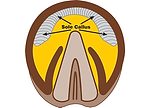Advertise Follow Us
Trimming
When Everything Clicks
Clicker training delivers as Florida farrier trims a pair of reluctant ponies
Read More
Breaking Tradition
Changing your order in shoeing is often the key to safety with many young or problem horses
Read More
It's No Big Feat!
Farrier says trimming pony feet with an electric grinder is not that difficult and offers multiple benefits
Read More
Farrier Science And Economic Loss Due To Lameness
Study finds important differences regarding perceptions of farrier skills and abilities
Read More
Physiological Trimming Theory Is Working
While some aspects of this scientifically proven trimming method are not new, they’ve been forgotten or under-utilized by many hoof-care professionals maintains this researcher
Read More
He's A "Sole Man"
California farrier Mike Savoldi challenges many traditional ideas on shoeing
Read More
How To
Proper Hoof Trimming And Placing Of Natural Balance Shoes Is Essential
Pay special attention when preparing a foot with this shoeing system
Read More
Mother Nature, Balance and Horseshoeing
This farrier maintains the shape of the foot and the angle of the pastern is predetermined and probably shouldn’t be changed
Read More












